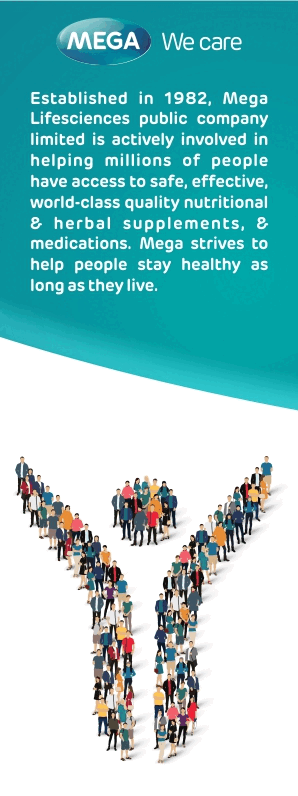A pilot study comparing mild stimulation Invitro-fertilization(IVF) versus long protocol IVF among women with advanced maternal age in a developing country
DOI:
https://doi.org/10.69614/ejrh.v16i1.732Keywords:
IVF, Advanced maternal age, Mild stimulation protocol, Long protocolAbstract
Abstract
Background: Due to the high costs involved with conventional Invitro-fertilization (IVF) methods, access to IVF is still restricted in many low- and middle-income nations. Mild stimulation IVF has been suggested as a cheaper alternative to conventional IVF to enhance access to IVF in places with limited resources since it employs lower doses of ovarian stimulating drugs. Introducing mild stimulation IVF in Ethiopia could help increase access to assisted reproductive services. There is no previous research in Ethiopia
Objective: This paper aimed to examine outcomes of a mild stimulation IVF pilot program at a clinic in Addis Ababa, Ethiopia.
Methods: This study was conducted at the Center for Reproductive Medicine IVF clinic. Ethical approval was obtained before the start of the data collection. A chart review of those infertile women who had undergone IVF in the past 3 years (April 1, 2019–April 1, 2022) was done. All of the electronic registrations at the clinic were complete for the data we need, and data abstraction was done using Open Data Kit (ODK). The ODK was tested on 5% of the study population and the validity checked before the start of data collection. The data was exported to Stata 14 for analysis. Summarization using frequency distribution was done for the clients’ socio-demographic characteristics. A Chi-square test was used to test associations between categorical variables and outcome variable. The intention was to do bivariate analysis followed by multivariate analysis for those factors that have significant association with outcome variable. A p-value of less than 0.05 is considered statistically significant, with a 95% confidence interval.
Results: A study of 296 IVF clients found that 69.3% were women whose age was less than or equal to 35 years, while 30.7% of women were older than 35. Of the 296 women, 97.3% had their B-HCG result known, with 62.5% being negative and 37.5% positive. The study focused on assessing which protocol was preferred for women with advanced age (age higher than 35 years). A subgroup analysis of 83 women with advanced age found that there was no significant statistical difference in pregnancy rate between mild stimulation and long protocol IVF (COR=0.78, P-value=0.727, 95% C.I=0.22-2.85). However, cross-tabulation analysis shows that among the 17 cases who are positive for pregnancy mild stimulation has higher pregnancy rate 13 (76.5%) compared to the long protocol 4(23.5%) in this age group. The long protocol cases had a mean requirement of Gonadotropin medication which is threefold higher than mild stimulation IVF.
.
Conclusion and recommendation: Even though there is no statistically significant difference between the two protocols, cross-tabulation showed that pregnancy rate is higher among mild stimulation cases. Additionally, the cost of gonadotropin treatment was three fold higher for long protocol IVF. Further studies with a larger sample size be conducted to confirm the results. However, based on the current findings, we recommend that mild stimulation IVF be considered as a better option for women with advanced maternal age in low resource settings, as it achieves a similar pregnancy rate at a lower cost.
References
1. Dyer S, Chambers GM, de Mouzon J, Nygren KG, Zegers-Hochschild F, Mansour R, et al. International Committee for Monitoring Assisted Reproductive Technologies world report: Assisted Reproductive Technology 2008, 2009 and 2010. Human reproduction (Oxford, England). 2016;31(7):1588-609.
2. Verberg MF, Eijkemans MJ, Macklon NS, Heijnen EM, Baart EB, Hohmann FP, et al. The clinical significance of the retrieval of a low number of oocytes following mild ovarian stimulation for IVF: a meta-analysis. Human reproduction update. 2009;15(1):5-12.
3. Akalewold M, Yohannes GW, Abdo ZA, Hailu Y, Negesse A. Magnitude of infertility and associated factors among women attending selected public hospitals in Addis Ababa, Ethiopia: a cross-sectional study. BMC Women's Health. 2022;22(1):11.
4. Hugh S. Taylor MLP, MBBS, MS Emre Seli, MD. Speroff’s Clinical Gynecology and Infertility 2020;9th edition.
5. Revelli A, Chiadò A, Dalmasso P, Stabile V, Evangelista F, Basso G, et al. "Mild" vs. "long" protocol for controlled ovarian hyperstimulation in patients with expected poor ovarian responsiveness undergoing in vitro fertilization (IVF): a large prospective randomized trial. Journal of assisted reproduction and genetics. 2014;31(7):809-15.
6. Song D, Shi Y, Zhong Y, Meng Q, Hou S, Li H. Efficiency of mild ovarian stimulation with clomiphene on poor ovarian responders during IVF\ICSI procedures: a meta-analysis. European journal of obstetrics, gynecology, and reproductive biology. 2016;204:36-43.
7. Ragni G, Levi-Setti PE, Fadini R, Brigante C, Scarduelli C, Alagna F, et al. Clomiphene citrate versus high doses of gonadotropins for in vitro fertilisation in women with compromised ovarian reserve: a randomised controlled non-inferiority trial. Reproductive biology and endocrinology : RB&E. 2012;10:114.
8. Youssef MA, van Wely M, Al-Inany H, Madani T, Jahangiri N, Khodabakhshi S, et al. A mild ovarian stimulation strategy in women with poor ovarian reserve undergoing IVF: a multicenter randomized non-inferiority trial. Human reproduction (Oxford, England). 2017;32(1):112-8.
9. Lazer T, Dar S, Shlush E, Al Kudmani BS, Quach K, Sojecki A, et al. Comparison of IVF Outcomes between Minimal Stimulation and High-Dose Stimulation for Patients with Poor Ovarian Reserve. International journal of reproductive medicine. 2014;2014:581451.



